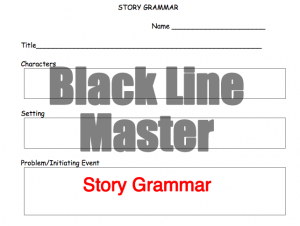Socials
Teacher Note: Depending on the length of class time available, this lesson may take 2-3 sessions to complete.
Learning Outcomes
Students will:
- construct, interpret and use graphs, tables, scales, legends, and various types of maps
- locate and describe current and historical events
- analyse ways that people’s interactions with their physical environments change over time
- evaluate the impact of natural processes and human-induced changes on communities
Steps to the Lesson
- Conduct a Horseshoe Debate.
- Discuss key vocabulary and distribute research organizer.
- Look at maps of region pre/post Bennett Dam construction.
- Make a T-Chart comparing the before and after effects of the Bennett Dam construction.
- Examine articles regarding the construction of the Bennett Dam.
- Watch a video from Fort Ware, B.C..
- Complete a Graphic Organizer while viewing the video.
- Complete a mind map (see Demonstrate Understanding).
- Conduct a second Horseshoe debate.
- Write journal reflections on new ideas and thinking.
CONNECT
Goals:
- The students will interpret a variety of geographic text to identify environmental change over time.
- The students will analyze and evaluate the impact of human-induced change on a community and on its surrounding environment
Task:
Students will create a mind map demonstrating the connections between the Bennett Dam and effects on Fort Ware, the citizens of BC, alternate resources, and the environment.
Activate Prior Knowledge:
Conduct a horseshoe debate about “Do you feel humans have the right to adapt the environment to meet their basic needs”. Please see link on Horseshoe Debate to view instructions.
Key vocabulary to discuss: Boreal, clearcut, old growth, ecosystem, global warming, stewardship, indigenous, reservoir, consultation, Serengeti, natural resource, ice age, woodland caribou, profit, hydroelectric, Aboriginal (Definitions)
Predict: Teacher asks the students to predict the significant changes to the northern landscape over the last fifty years. (A/B partner talk suggested) Students use T-Chart to track their thinking.
Question: Teachers distribute maps of the Williston Lake Region to the students. Ask students what significant changes they notice in the three map samples. (Teacher note: Students could continue to work in A/B partners or combine into groups of three/four to analyze maps.) Students can record their map observations in the top section of the Graphic Organizer.
PROCESS
Distribute articles on the Bennett Dam construction:
Bennett Dam Vistors Centre Information
The Dynamo that Started it All
Click to view historical Photos of the Bennett Dam construction
In groups of three/four, groups choose one article to read and discuss. Brainstorm on the board the key features of the Bennett Dam (ie. size, location, type of dam etc.). All groups need to share their key ideas.
Video: Students watch the following video and track their thinking using the Graphic Organizer.
Reminder: It is important to stop throughout the video and give students (A/B partners) opportunity to talk or respond to the video.
TRANSFORM
Students create a mind map demonstrating the connections between the Bennett Dam and effects on Fort Ware, the citizens of BC, local geography, BC Hydro, and the environment (wildlife, natural resources).
REFLECT
Conduct a horseshoe debate for a second time using the same topic “Do you feel humans have the right to adapt the environment to meet their basic needs.” Students will be able to make a more informed decision based on the new information they have learned.
Students complete a journal activity to explain their new ideas and thinking. Encourage students to discuss the new ideas they have learned and whether mind mapping supports their learning style.
Extend learning or next lesson
- Conduct a structured debate on the issue of human induced changes to the environment.
- Write a letter to a local newspaper on the issue of hydroelectric dams.
- Write a letter to persuade a local politician for or against a new dam in the area.
- View a BC Hydro web page promoting the Peace River Site C Hydro Project.
- Read a newspaper regarding the proposed building of the Peace River Site C Hydro Project.


